Is Ireland’s Tax System Progressive ?
24 May 2022In his opinion column on 29 September Fintan O’Toole asserts that the claim that Ireland’s tax system…
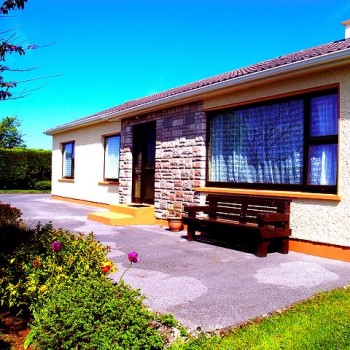
The Local Property Tax will redistribute almost €139 million to Councils in 2018.
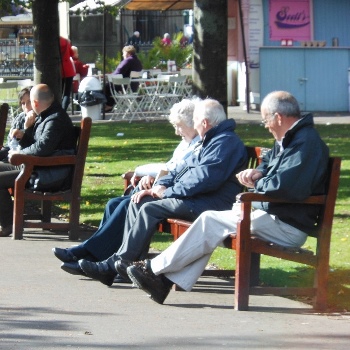
This report recommends the establishment of a separate statutory scheme for home care costs.

While Ireland’s public debt burden is still relatively high, it is declining and the cost of servicing it will decline further as a share of national income.
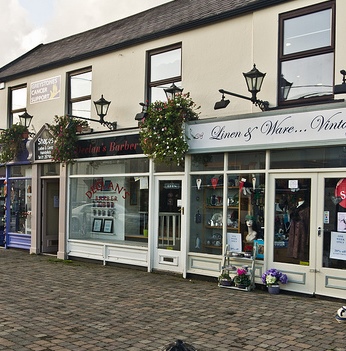
Over €1.3 billion in commercial rates was collected by Councils last year. There was over €297m in outstanding rate arrears at the end of 2016.

Failure to update property values for local property tax could put the future of the tax at risk. The general revaluation of houses should be carried out as planned in 2019.

Local Authorities spent €4.3 billion in 2016. Only two Councils were over budget.
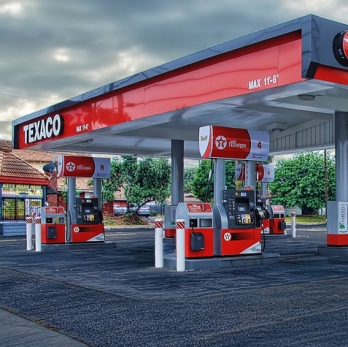
Environmental taxes are one of the least distortionary taxes. €5 billion was raised in 2016.
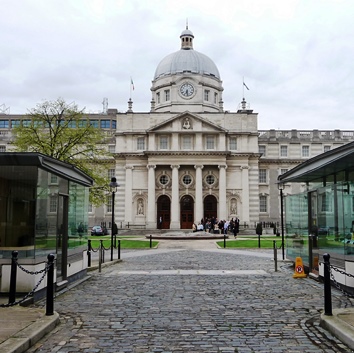
The Draft National Risk Assessment 2017 identifies risks which the Irish economy currently faces.

Tracker Mortgages are worth almost €1.2 billion in lower interest charges compared to loans at the standard variable rate.
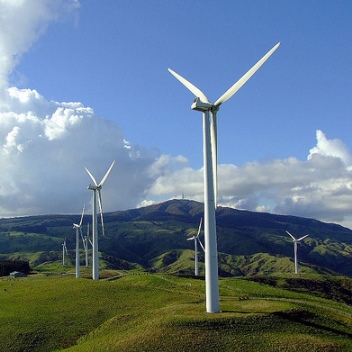
The proposed PSO Levy for the period 2017-2018 is €496.5m. This is €104m (27%) higher than the current PSO levy.
In his opinion column on 29 September Fintan O’Toole asserts that the claim that Ireland’s tax system…
The time has come for us to close our doors as our funding from Atlantic Philanthropies has been exhausted.
We end with some final thoughts.
Employment increased by almost 70,000 (3.1%) in the year to Q4 2017. Over 115,000 part-time workers would like to work more than they currently do.
Irish-owned firms are suffering from low productivity growth. To deal with this, the OECD recommends increased investment in lifelong learning & training.
The government has set an ambitious target to have 500,000 electric vehicles (EVs) on the road by 2030. There are currently circa 3,000 electric vehicles in Ireland or 15 per cent of the 2020 target.
The main categories in need of social housing in Dublin are those in single person households, the unemployed & those living in private rented accommodation.
Under the polluter pays principle, tax rates on diesel & petrol fuels should be at a rate which is commensurate with the total environmental costs they incur.
Local Authorities plan to spend almost €4.8 billion in 2018. See your Council’s spending on LocalAuthorityFinances.com
Valuations for Local Property Tax are due to be revised in 2019. This note sets out some of the issues which arise.
€19.87 billion was spent on social protection payments in 2016. There were 1.39m recipients of weekly payments.
The number of people on labour activation programmes has fallen by over 25 per cent or 24,000 in the last three years.
The educational attainment of people in Ireland is rising rapidly. Those in the 35-39 age group are over twice as likely to have a third level qualification as those in the 65-69 age group.
Household energy prices in Ireland are near the Eurozone average, but are relatively high compared to the UK.
The results from the 2016 Survey of Income and Living Conditions (SILC) show an increase in living standards and a significant reduction in those experiencing “enforced deprivation”
Legislation before the Oireachtas provides that age-related levies on health insurance premia will be paid for ten years only.
The young are 30 times more likely than the old to be in private rented accommodation. Almost three quarters of those under 25 rent in the private sector compared with 1 in 40 of those over 65.
The tax wedge on low wage workers in Ireland is the lowest in the EU.
One in thirteen Irish people are severely materially deprived.
There were over 8,300 homeless people in September 2017 – an increase of almost 1,700 or over 25% since September 2016.
The Local Property Tax will redistribute almost €139 million to Councils in 2018.
The Melbourne Mercer Global Pension Index (MMGPI) 2017 finds that Ireland is ranked 12th of the 30 countries surveyed.
This report recommends the establishment of a separate statutory scheme for home care costs.
Local Authority rent arrears amount to €73 million; of which €37 million are in Dublin.
The net effect of Council adjustments will decrease LPT revenue by €23 million in 2018.
The Minister for Finance plans to amalgamate USC and PRSI over the medium term. Here we examine some of the issues which arise.
In Budget 2018, 50c was added to the price of a 20 pack of cigarettes, and there was no change in excise duties on alcohol, petrol or diesel.
Over 250,000 jobs have been created since the lowest point in the downturn – one-third have been created in Dublin.
While Ireland’s public debt burden is still relatively high, it is declining and the cost of servicing it will decline further as a share of national income.
Over €1.3 billion in commercial rates was collected by Councils last year. There was over €297m in outstanding rate arrears at the end of 2016.
We will use Irish Modified GNI rather than GDP as the denominator in making international comparisons of Irish public expenditure throughout this website.
Almost 7,000 people were homeless on Census night in 2016.
An extra 145,000 people have taken out health insurance in the last two years.
Social Protection spending will increase by €52m (0.3pc) in 2017 relative to 2016.
Failure to update property values for local property tax could put the future of the tax at risk. The general revaluation of houses should be carried out as planned in 2019.
Local Authorities spent €4.3 billion in 2016. Only two Councils were over budget.
Environmental taxes are one of the least distortionary taxes. €5 billion was raised in 2016.
The Draft National Risk Assessment 2017 identifies risks which the Irish economy currently faces.
Current health expenditure in Ireland was almost €20 billion (9.7% of GNI) in 2015.
Approximately 92,000 part-time workers would prefer to work more than they currently do.
Tracker Mortgages are worth almost €1.2 billion in lower interest charges compared to loans at the standard variable rate.
The proposed PSO Levy for the period 2017-2018 is €496.5m. This is €104m (27%) higher than the current PSO levy.
Less than half of Irish low-skilled workers were employed in 2016. Upskilling and re-training opportunities for such individuals are essential.
The most effective way of dealing with housing costs is through targeted housing subsidies.
Staff numbers in Local Authorities fell by over 8,300 or 24 per cent between 2008 to 2015.
The total direct tax arising from the operation of foreign owned multi-national corporations in Ireland in 2015 was €10.5 billion.
Ireland has the highest share of people living in households with very low work intensity (VLWI) in the EU.
This note examines the latest OECD data on the progressivity of the Irish income tax system in comparison with other OECD countries.
The lower excise duty on roll-your-own tobacco is no longer justified.
OECD recommends reform of the tax and welfare system and cutting red tape to boost growth.
Almost one-in-five people in Ireland were living in households with very low work intensity in 2015.
Ireland has the 3rd largest gap to close in relation to its share of renewable energy by 2020.
The main categories in need of social housing in Dublin are single person households, those living in private rented accommodation & the unemployed.
This note examines the trends in public investment and notes the flexibility to increase public investment under the EU fiscal rules.
Further narrowing of the tax base will increase risks as approx 1 in 3 individuals are exempt from both income tax & USC in 2017.
The proposal to charge for excessive use of water under the Water Services Act, 2007 is not credible.
A national revaluation of commercial and industrial property rates is underway.
Ireland has very high hospitalisation rates by international standards particularly when account is taken of our relatively young, healthy population.
The results from the 2015 Survey of Income and Living Conditions (SILC) show a significant reduction in inequality.
This note examines the changes in the structure of employment in the Irish economy since the turn of the century. The service sector is the key driver of job creation.
Median hourly earnings in Ireland are the highest in the Eurozone after adjusting for different price levels in the various countries
The Local Property Tax redistributes funds though an Equalisation Fund. In 2017, it is worth €140m to 21 Local Authorities.
Rising enrolment numbers will increase public spending on education in the next 5 to 10 years.
Local Authorities will spend €4.4 billion in 2017. Where will the money come from and what will it be spent on?
€20 billion was spent on social protection payments in 2015. There were 1.4m recipients of weekly payments
The Report by the Expert Commission on the Funding of Domestic Public Water Services in Ireland has been submitted on schedule to the Joint Oireachtas Committee on the Future Funding of Domestic Water Services.
Income from commercial rates has increased by €137m (10%) between 2008 and 2015.
Almost 60% of wealth in Ireland is owned by those over 55 and the largest components of tangible household wealth are the main residence and farms.
Of the close to 24,000 tenancies in Dublin City Council, 6,300 or 26% are in arrears to the value of 12 weeks rent or more.
While Ireland’s public debt burden is still relatively high, it is declining and the cost of servicing it will decline further as a share of Government revenue.
The cost of claims in the private health insurance market is rising steeply for the those aged over 80 years old. Those aged 80+ have seen their average claims increase by 66% or €2,024 between 2010 and 2015.
Ireland’s pension system promises adequate benefits in general but unless action is taken soon to address shortcomings, there are question marks regarding the delivery of these promises.
Old people pay less tax than the young on the same income. The differences are very large particularly for married couples with average incomes and below.
For the first half of 2016, the Government had a deficit of -€1,269 million (1% of GDP) compared with a deficit of -€2,324 (1.9% of GDP) for the same period in 2015.
Today as it’s Budget Day, we updated our infographic that shows where the tax goes that is…
The cumulative cost of Councils adjusting the basic rate of LPT for 2017 is €20.2 million
BUDGET2017: Where does the excise tax from beer, wine, cigarettes and diesel go?
This note explains the new conditions agreed by the Government and the IPHA for the supply of medicines to the Irish Health Service.
Agency costs in the first 7 months of 2016 (Jan – July) have increased by €4.6m (+2.4%) on the same period in 2015.
Mere indexation of the income tax system would cost about €4bn over the next five years.
The Public Service Obligation (PSO) levy will increase by 23% to €401m from 1 October 2016.
11 local authorities reduced the basic rate of Local Property Tax (LPT) for 2016, at a cost of over €36m. A similar reduction in 2017 would cost €36.8m.
There is scope to increase the excise duty on diesel in Budget 2017 to yield €244m in a full year.
One in five young people, aged 20-24 years, were ‘Not in Employment, Education or Training’ (NEET) in 2015.
The share of taxes on pollution and resources in Ireland is one third of the EU average. There may be scope to address this by decreasing direct taxes on labour and increasing taxes on pollution.
This report estimates that government expenditure on children (0-18 Years)in Ireland for 2013 was almost €12 billion.
Report was written by researchers from the UCC School of Economics.
The carbon tax has collected over €2 billion in revenue since it was introduced in Budget 2010. There is scope to increase this and use the money to reduce other taxes.
This note examines the latest OECD data on the progressivity of the Irish income tax system in comparison with other OECD countries.
€19.1bn or 11.7% of Gross National Income (GNI) was spent on Health in 2014. What are the trends?
This note sets out the current position in relation to water charges. It also looks at the system of paying for water services in Northern Ireland.
This Publicpolicy.ie report by a team led by Dr Donal Donovan, former Deputy Director of the IMF, proposes a number of measures to strengthen Ireland’s management of risks.
We were greatly saddened to learn of the sudden death of Professor Brendan Walsh. Brendan joined the Publicpolicy Board when we began in October, 2011 and through his advice and experience made a very valuable contribution to our work. He is a great loss. We extend our deepest sympathies to his family and friends.
There is a clear link between educational attainment and health; better educated people enjoy better health.
Given the age structure of our population, our spending on health looks very high and our spending on education seems low.
Social protection spending in Ireland (excluding pensions) is the 5th highest in the EU.
Twenty days prior to the Easter Rising, the Chancellor of the Exchequer in London, Mr. Reginald McKenna, presented his Budget for 1916-17. The state of the public finances in Ireland in 1916 is outlined here.
Rents in Dublin have now exceeded the levels reached at the height of the property boom in Q4 2007 by 0.4%. Outside Dublin rents are still 14.5% off peak.
Central Bank restrictions on mortgage lending have moderated the rate of increase in house prices which are still substantially below the unsustainable peak levels reached in 2007
This note summarises important observations on the management of the Irish economy in the EU Commission Country Report on Ireland published in February, 2016.
The Local Government Fund is a central fund which finances part of the expenditure of local authorities. In 2016 €1.8 billion will be spent.
The proposal to charge for excessive use of water under the Water Services Act, 2007 is not credible.
The Report by the Expert Commission on the Funding of Domestic Public Water Services in Ireland has been submitted on schedule to the Joint Oireachtas Committee on the Future Funding of Domestic Water Services.
This note sets out the current position in relation to water charges. It also looks at the system of paying for water services in Northern Ireland.
Irish Water has made significant progress in a short period. Abolishing Irish Water and removing domestic water charges would be a mistake and set back the prospects of having water services fit for a modern economy.
This note analyses the new structure of water charges.
We’ve contributed a lot to the debate on water pricing in Ireland. Here’s an infographic that sums up our position on the pricing of water in Ireland.
The rates and structure of Water Charges vary significantly across the U.S.
California continues to be a world leader in most of what it does and how it does it.

79 Merrion Square, Dublin 2, Ireland
tel: 353 (1) 676 0414 | email: info@publicpolicy.ie
Company registration number: 504956
Privacy Policy | Chairman's Blog | Events | Video | Public Policy Documents | News Property Tax Ireland | Pension Reform Ireland | Water Charges Ireland

